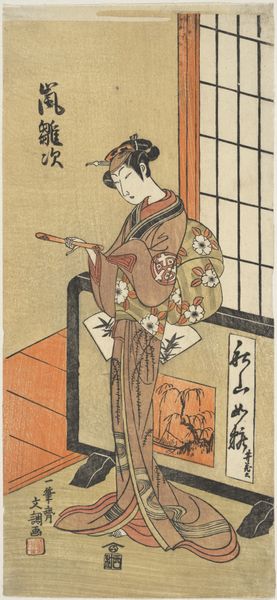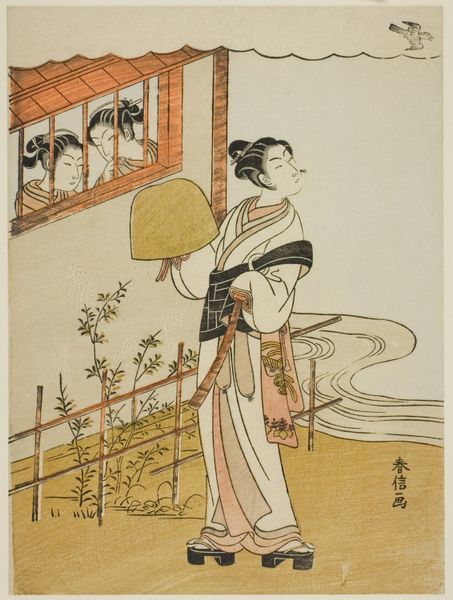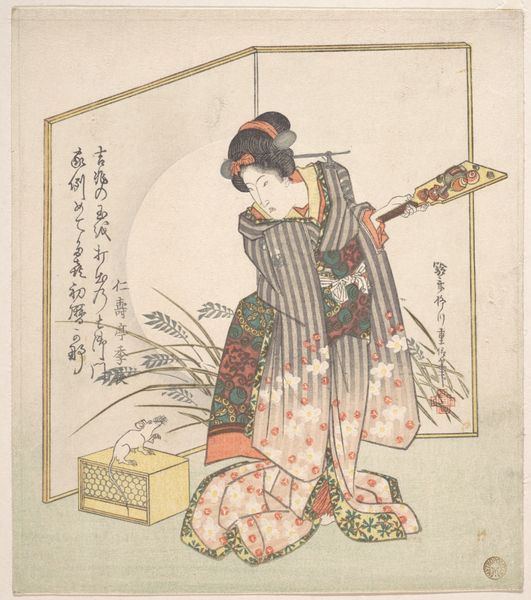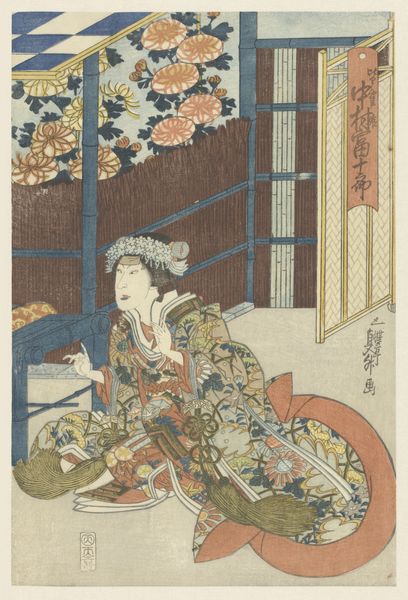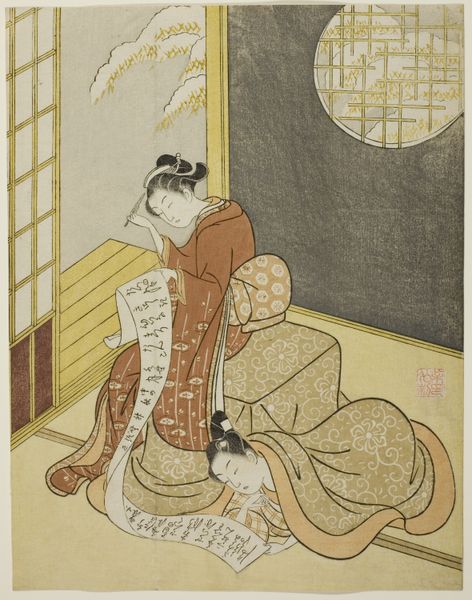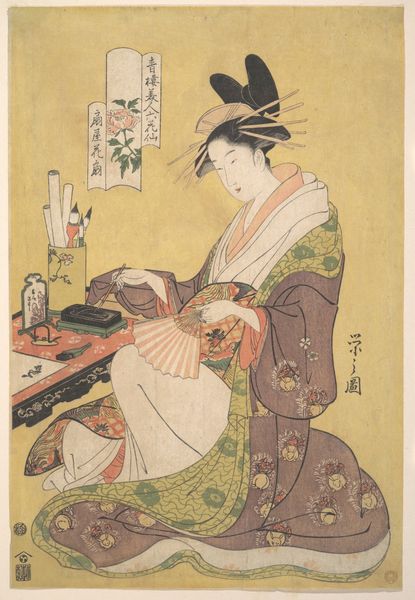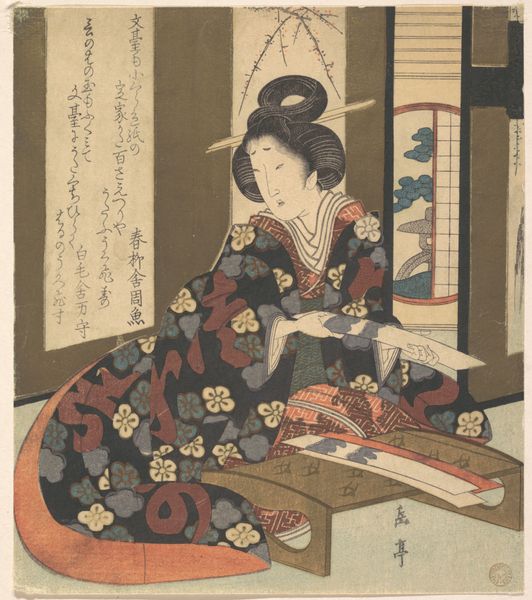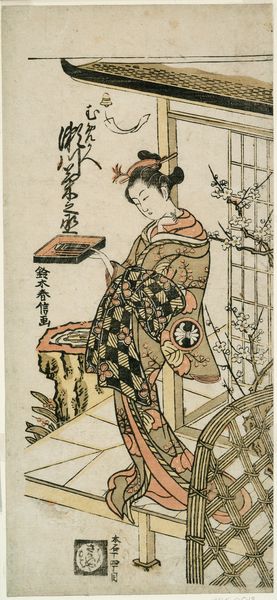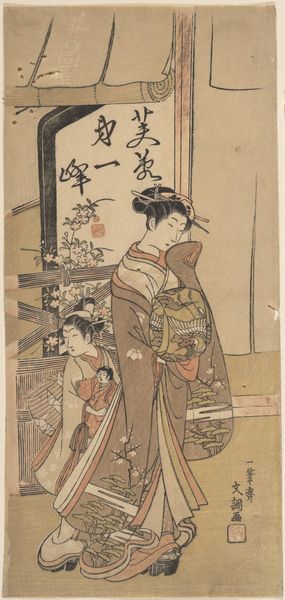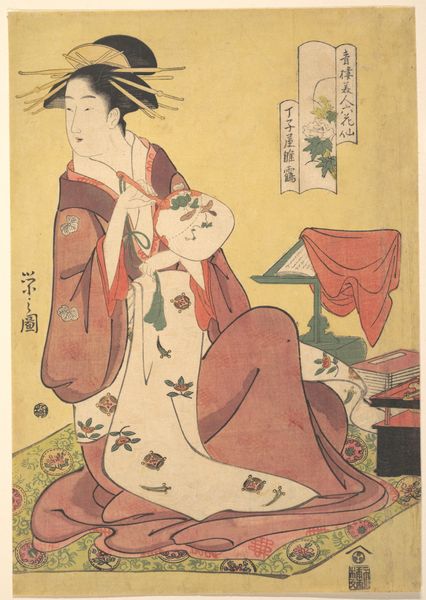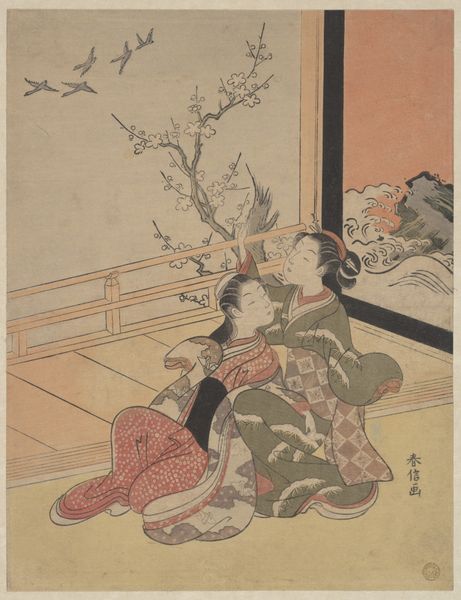
print, woodblock-print
#
portrait
# print
#
asian-art
#
ukiyo-e
#
woodblock-print
#
genre-painting
Dimensions: 10 3/4 x 7 7/8 in. (27.3 x 20 cm)
Copyright: Public Domain
Curator: The soft hues of this print evoke such tranquility, don't you think? Editor: I do. There is such muted stillness in the scene. The subtle colors feel both intimate and withdrawn. Curator: What you're sensing comes through Suzuki Harunobu, a master of ukiyo-e. The piece, simply titled "Print," dates from around 1752 to 1772. It's a woodblock print, a technique very popular in Japan at the time, and you can view it in the Metropolitan Museum of Art here in New York. Editor: Yes, those soft colours are achieved with woodblock printing. Visually, it's almost whispering a secret. The young woman there, seemingly in deep concentration as she attends to her lamp... What can we glean from her stance and posture? Curator: Harunobu revolutionized color printing, using many blocks for nuanced tones and almost photographic detail. The woman, seemingly preoccupied with lighting a lamp, embodies a very domestic role. Yet, we must remember that ukiyo-e prints weren't mere records, they spoke of urban Edo life—often idealised to appeal to certain classes. Note her expensive clothing, the ordered, yet minimalist decor of her house. The artist probably wished to hint to prosperity and luxury. Editor: Her gaze fixed downward creates such emotional depth and evokes a sort of private ritual. The light is so poignant, don’t you think? The artist might have intended for the lamp to carry an emotional weight that goes beyond simple illumination, like spiritual transcendence or something domestic such as illuminating her surroundings while a family member or husband has not come back yet. Curator: Yes, the lantern might signal different societal anxieties and markers. It might highlight a kind of forced stillness inherent for women during this time. What should they think about when the house is dark, while patiently sitting inside those interiors and the exterior promises potential excitement? Editor: An evocative reading. I leave with a sense of fleeting moments preserved and amplified. Curator: Exactly! Harunobu reminds us how constructed images reflect and influence both society and individual perceptions, even centuries later.
Comments
No comments
Be the first to comment and join the conversation on the ultimate creative platform.
